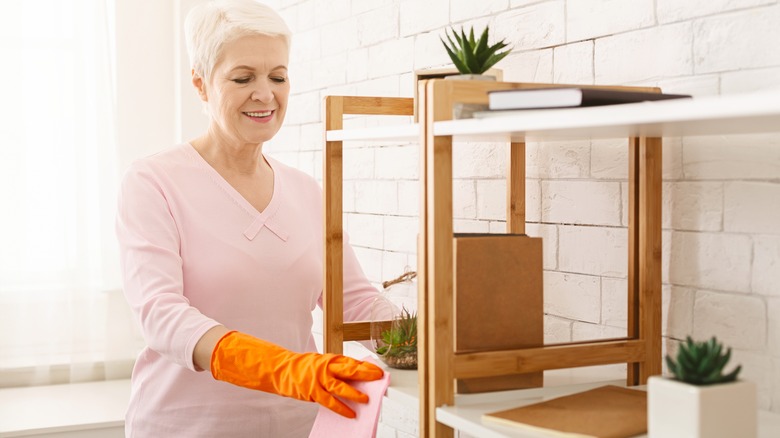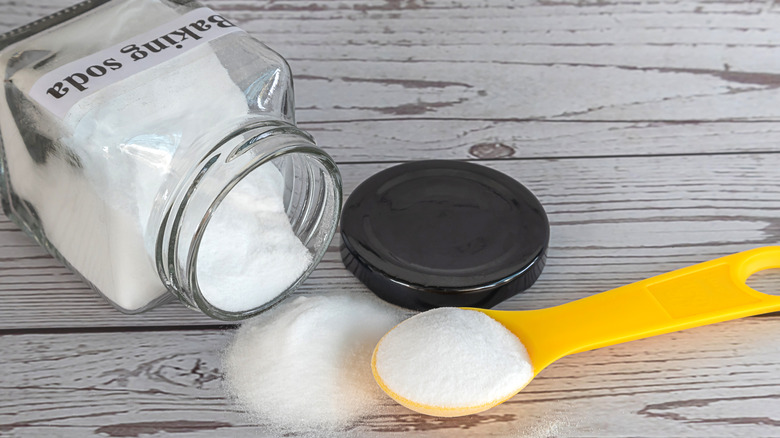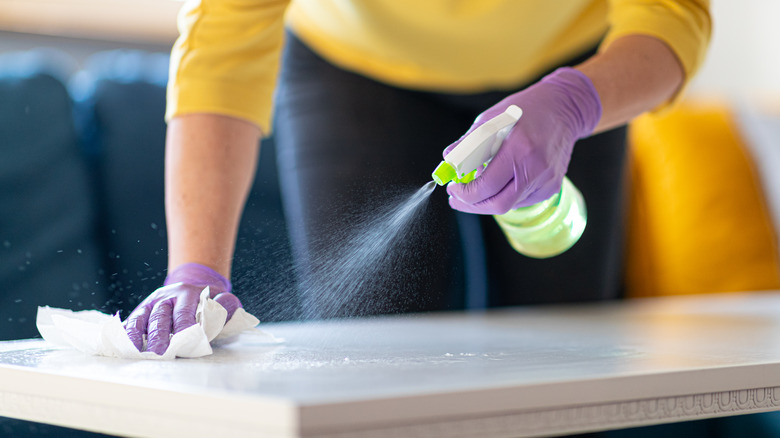Why You Should Rethink Trying Baking Soda Cleaning Hacks On Painted Surfaces
If you've only ever used baking soda for recipes in the kitchen — maybe going as far as using its odor-absorbing properties in your fridge — you're missing out on the countless other uses the natural mineral possesses. Today, commercially produced baking soda has been around for nearly 200 years. Throughout this period, it amassed a multitude of known uses in cooking, gardening, wellness, beauty, and cleaning. You can use it to clean your kitchen and bathroom, and it's also a good odor absorber for small, musty spaces. People looking for natural cleaners often turn to baking soda, but even this handy ingredient has its drawbacks. While it can clean many surfaces, glass, aluminum, and marble aren't among them. In addition, baking soda may leave behind a residue, which is the last thing you want on a freshly cleaned surface.
As useful as baking soda is, it also shouldn't be used to clean painted surfaces, including walls and furniture. The same mild abrasiveness that makes this ingredient perfect for cleaning stainless steel surfaces is the reason it can damage paint. If you want to keep your painted items in tip-top shape, you'll need to rely on other cleaners.
Baking soda can damage painted surfaces
You want to avoid damaging your furniture with improper cleaning ingredients, whether it's a painted table, a chair, a bookcase, or even your walls. As Molly Maid President Marla Mock told Southern Living, "Avoid using baking soda on painted surfaces, as it can create chips and uneven textures in the paint." Once chips and cracks form, continuing to clean with baking soda increases the risk of it sinking into those cracks, resulting in unattractive buildup. Although it's only mildly abrasive, baking soda is still harsh enough to damage painted items or other easily scratched surfaces like ceramic stovetops and mirrors.
Using baking soda to clean painted wood furniture can dull it, causing it to look distressed. If that's not the aesthetic you're going for, you'll need to restore your piece, which can be costly. While you can spot clean stains off of walls with baking soda, this should be done with care to ensure you don't damage the paint. To clean entire interior walls, skip the baking soda and use other ingredients instead.
Clean painted surfaces with the right products
Marla Mock further advised Southern Living, "Use a mild, non-abrasive cleaner suitable for painted surfaces to preserve the paint and prevent any damage." These cleaners don't have to be specialized or expensive, either. As Painting Expert Wil Bias suggests in an interview with Today, dish detergent and water are a good combination for cleaning painted walls. Alternatively, a few tablespoons of white vinegar in a gallon of water is another inexpensive way to use ingredients you likely already have at home.
It's important to match the cleaner to the type of paint. Wall paint can be matte, satin, or glossy. Paint is also either water- or oil-based. Matte or flat surfaces should be cleaned using the most gentle cleansers and methods; warm water may be enough to clean, along with a light touch with a sponge. Glossier surfaces can usually withstand a gentle detergent and water, as well as a degreaser. Dry the surfaces after cleaning with a microfiber cloth. To avoid damage, always spot test in an inconspicuous area first.


